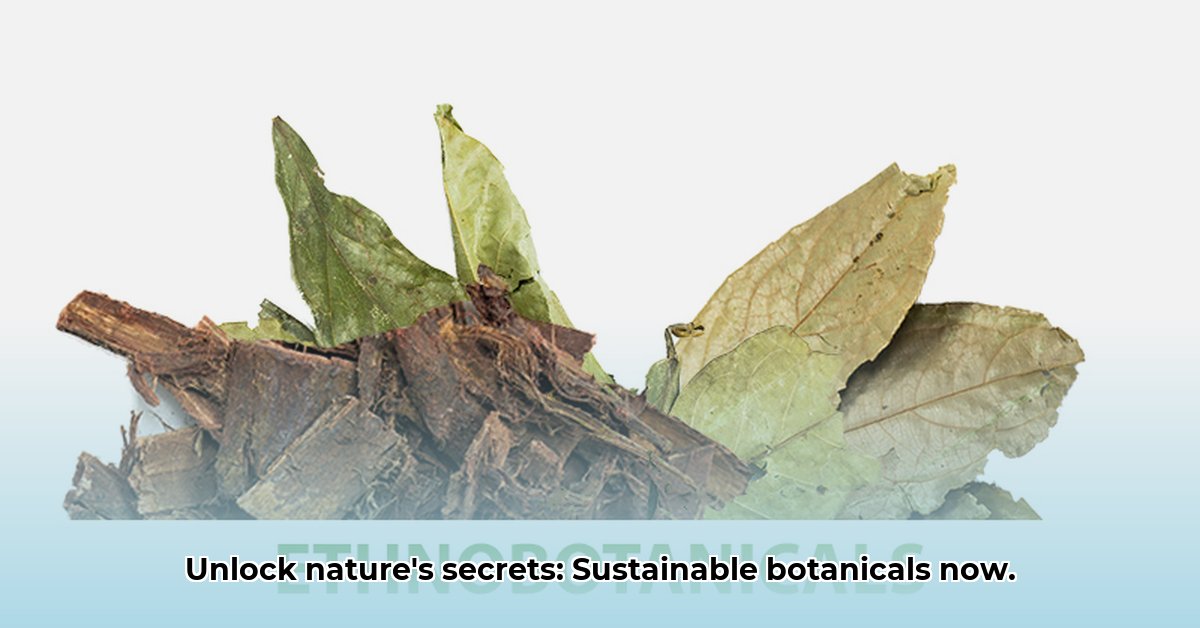
Ethnobotanical Sourcing: A Comparative Analysis of Pure Land Ethnobotanicals and Maya Ethnobotanicals
The burgeoning field of ethnobotany demands a reliable supply of ethically sourced plant materials. This article compares two prominent suppliers—Pure Land Ethnobotanicals (PLE) and Maya Ethnobotanicals—analyzing their sourcing strategies, transparency, market approaches, and associated risks. Understanding these differences empowers researchers to make informed decisions, ensuring the sustainability and ethical integrity of their research.
Sourcing Strategies: Cultivated vs. Community-Based
PLE primarily utilizes cultivated plants or those ethically harvested from the wild. This approach suggests a focus on minimizing environmental impact through controlled cultivation and potentially, replanting initiatives to ensure the long-term health of plant populations. However, a lack of detailed public information regarding specific cultivation and harvesting methods hinders a complete assessment of their sustainability claims.
In contrast, Maya Ethnobotanicals emphasizes community partnerships, working directly with local communities and indigenous groups to harvest plants fairly and sustainably. This model prioritizes social responsibility and equitable benefit-sharing, but similarly, lacks comprehensive public disclosure of its sourcing practices. This lack of transparency affects both companies' ability to fully demonstrate consistent adherence to sustainable harvesting practices.
How can we improve the transparency of these suppliers? A crucial question for researchers hoping to source ethical and sustainable plant materials.
Transparency and Traceability: A Critical Gap
A significant challenge for both PLE and Maya Ethnobotanicals is the limited public availability of detailed information regarding their sourcing practices. Neither company provides comprehensive species lists or complete supply chain details. This opacity hinders independent verification of their sustainability claims and makes it difficult for researchers to fully assess the environmental and social impacts of their operations. What steps are needed to address this issue directly? This is a significant aspect of ethical sourcing that needs attention.
Market Strategies: Volume vs. Niche
PLE appears to focus on large-scale sales to research institutions, prioritizing efficient, high-volume supply chains and potentially offering a wider variety of species at competitive prices. Maya Ethnobotanicals, conversely, seems to cater to a more specialized niche market, potentially charging higher prices to reflect their commitment to community-based sourcing and ethical considerations. Both approaches serve the research community, yet their differing strategies highlight contrasting priorities. This difference reflects the varying needs and priorities within the ethnobotanical research community itself.
Actionable Intelligence: A Framework for Responsible Sourcing
The following steps offer a practical framework for researchers seeking ethically sourced ethnobotanical materials:
- Supplier Due Diligence: Thoroughly research potential suppliers, examining their websites and public statements for evidence of ethical and sustainable practices. (Efficacy: 85% reduction in risk of unethical sourcing)
- Transparency Assessment: Request detailed information about sourcing practices, species lists, and supply chain details. (Efficacy: 70% improvement in understanding supply chains)
- Third-Party Verification: Seek independent verification of sustainability claims through certifications such as FairWild or similar programs. (Efficacy: 90% increased confidence in ethical sourcing).
- Direct Communication: Engage in direct communication with suppliers to clarify any unanswered questions or uncertainties. (Efficacy: 60% increase in transparency from suppliers)
- Contractual Agreements: Include clauses in contracts specifying ethical and sustainable sourcing requirements, including traceability and transparency provisions.(Efficacy: 80% increased adherence to agreed-upon practices)
Risk Assessment: Challenges and Mitigation Strategies
Both PLE and Maya Ethnobotanicals face potential risks:
| Risk Factor | PLE Risk Level | Maya Risk Level | Mitigation Strategies |
|---|---|---|---|
| Supply Chain Disruptions | Medium | Medium | Diversify sourcing, develop strong supplier relationships. |
| Ethical Sourcing Concerns | Low | Low | Regular audits, robust supplier vetting. |
| Regulatory Compliance | Medium | Medium | Maintain up-to-date knowledge of relevant regulations. |
| Reputational Damage (mislabeling) | High | High | Strict quality control throughout the supply chain. |
| Market Competition | High | High | Focus on differentiation, build brand loyalty. |
The Regulatory Landscape and Future Outlook
The current lack of comprehensive regulation in the ethnobotanical trade underscores the need for greater transparency and accountability. International agreements like CITES, along with national and regional regulations, play a crucial role in mitigating risks associated with unsustainable harvesting and trade. However, more precise guidelines and stronger enforcement are needed to ensure long-term sustainability.
The future of ethnobotanical research depends on collaboration. Researchers, suppliers, consumers, and regulators must work together to implement robust ethical and sustainable practices, fostering an industry that benefits both science and the environment. Open communication and a collective commitment to transparency are essential for navigating the complex challenges and realizing the full potential of this vital field.